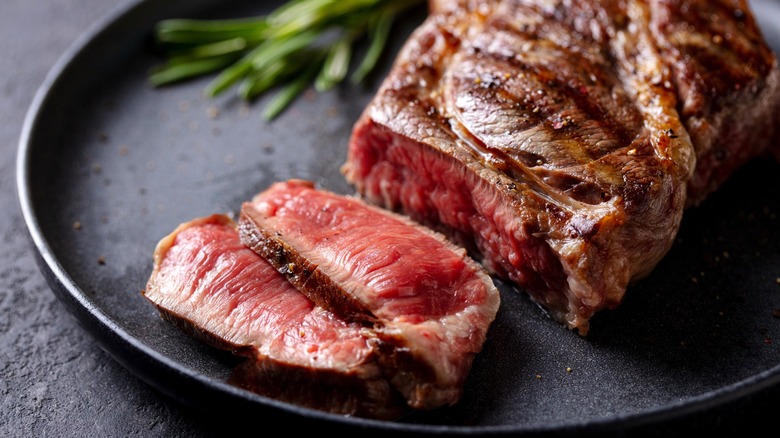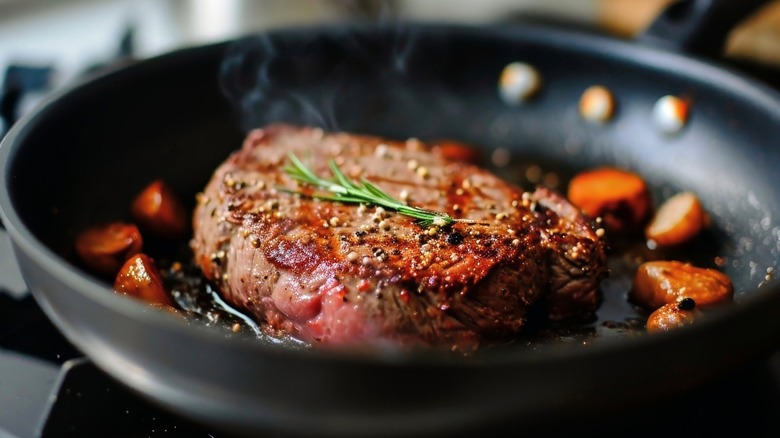The Steak You Should Only Enjoy Rare
People harbor varying opinions on what temperature translates to a perfectly prepared steak. Some folks enjoy steak cooked "blue" — so rare it's almost mooing in the center — and a few eccentrics out there prefer a well-done steak with all the crimson color banished from the protein. Certain cuts of beef can still be juicy when thoroughly cooked through, but some will dry out so much that they become more akin to jerky than a succulent steak.
We reached out to Marissa Stevens, recipe developer and founder of Pinch and Swirl, regarding which cuts work best for specific temperatures. She explained that hunks of beef devoid of fat should never be prepared to a well-done temperature if you want a tender, juicy bite. "Lean cuts lack the internal fat that keeps meat juicy during longer cooking," she said. "As they cook past medium, they dry out quickly and lose tenderness."
Ribeye or even tomahawk steak can be challenging to cook in its own right, but because these cuts are teeming with fatty marbling, they can be more forgiving in terms of juiciness if someone wants it prepared toward well-done. Lean steaks, on the other hand, contain little to almost no fat running throughout the protein, and when heated too long, they become dry and chewy. Stevens pointed to two cuts in particular that should only be cooked for a short time, saying, "Lean steaks like sirloin or eye of round are best rare to medium-rare." The revered filet mignon would also fall into this category.
Cooking lean steak to a perfect rare temperature
An impeccable sear on a steak is a major part of its appeal, but achieving an appetizing crust when the protein is only briefly heated can be a challenge. Marissa Stevens shared her advice on how to avoid overcooking while attaining a perfect sear, saying, "I like a ripping-hot cast iron skillet and just a minute or two per side, depending on thickness. Then rest." Just a couple of minutes per side goes by quickly, but if the pan is screaming hot while the steak sears, it will arrive at a beautiful rare or medium-rare temperature as it rests, thanks to residual heat that continues to cook it. "That's where they're still tender without drying out," Stevens said. "Anything past that, and they start to toughen."
Thinner cuts are difficult to cook rare because they heat up fast, so if you're picking up some of the best lean cuts of steak at Aldi, or your preferred meat supplier, opt for thicker steaks if you have the chance. Another trick worth considering is basting lean steaks to keep them juicy. Add butter to the pan once the steak is on, accompanied by complimentary aromatics like rosemary, and spoon the melted fat over the meat. The heated butter can slightly slow the cooking process, so it may be wise to veer toward the two-minute mark for the sear as opposed to just one, so your steak will be perfectly cooked.

